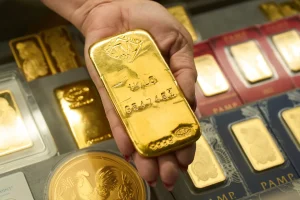In a striking sign of economic distress, more than 1 million businesses closed in South Korea in 2024—the highest number ever recorded since tracking began in 1995. According to Seoul-based Yonhap News, a staggering 1,008,282 sole proprietorships and corporates filed for closure last year, reflecting the deepening economic challenges facing Asia’s fourth-largest economy.

Retail and Hospitality Hit Hardest
The retail sector and hospitality industry bore the brunt of the closures, accounting for almost half of all business shutdowns. The National Tax Service data confirms that South Korea had never seen such levels of business collapse in a single year, even during previous economic downturns.
Before 2024, no year had surpassed the symbolic one million closures mark, but now the economic scars of the COVID-19 pandemic and the relentless pressure of high interest rates are pushing more and more businesses over the edge.
The Root Causes of the Business Collapse
The rise in business closures in South Korea has been steadily climbing since 2023, fueled by a toxic mix of factors:
- Accumulated decline from the pandemic
- Persistently high interest rates
- Rising delinquency rates
- Crippling inflation
- Shrinking consumer spending
At the heart of this crisis lies declining profitability. Official data shows that operating profit margins have nosedived—from 17.8% in 1991 to just 1.7% in 2023. This alarming fall highlights the increasing difficulty of sustaining small businesses in South Korea.
Declining Sales and Falling Incomes
The overall business closure rate reached 9.04% in 2024, a slight increase from 9.02% in 2023. The most frequently cited reason for closures was declining sales, which accounted for approximately half of all business shutdowns.
According to Kim Kwang-seok, head of economic research at the Korea Economic Institute, the combination of persistent inflation and high borrowing costs has slashed real incomes, forcing consumers to cut back on retail and dining. This, in turn, has triggered a downward spiral for thousands of small businesses.
The Gas Station Crisis: A Symbol of Decline
One sector that dramatically illustrates the problem is South Korea’s gas stations. Nearly 1,000 stations have shut down over the past six years, with the total number falling from 11,499 in 2019 to just 10,528 by mid-2025, according to KBS World. The decline in fuel demand, combined with tightening profit margins, has made it impossible for many operators to stay afloat.
Looking Ahead: A Shrinking Small Business Landscape
The current crisis paints a grim picture for South Korea’s small business owners. Without targeted government support and economic reforms, the closure rate is likely to remain dangerously high. Many fear that prolonged financial stress could lead to a permanent contraction of the nation’s once-thriving entrepreneurial sector.















Comments are closed.